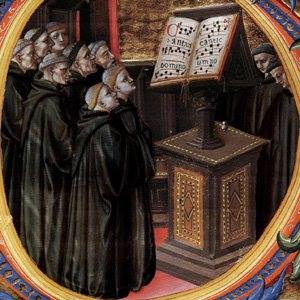
I’ve just spent a restful evening on my sofa watching the last of Bettany Hughes‘s somewhat epic series of documentaries The Ancient World with Bettany Hughes: When the Moors Ruled in Europe. It’s always tempting to criticize this kind of documentary (as I have done in the past; mea maxima culpa!) on what it simplifies or leaves out. However, Bettany Hughes has been helped by having a two-hour time slot on More4 (or Mo-Fo as I’ve heard it called) for each episode.
Never explicitly mentioned, When the Moors Ruled in Europe is clearly set against the 21st-century backdrop of the War on Terror. Aired on the evening before the general election in which two parties — UKIP and the BNP — have anti-Islamic policies in their manifestos, this episode serves as a corrective to the unthinking assumptions of white/European/Christendom superiority. For here we glide endlessly through the mesmerising earthly paradises of Al-Andalus, through Granada’s Alhambra and Córdoba’s Grand Mosque (and not to forget Al-Karaouine University, Fez, Morocco), all set against a backdrop of golden mountains. Here we have liberal, tolerant and highly educated Muslims teaching ignorant Christians about ancient Greek learning before finally falling to the Talibanesque Spanish Inquisition. Although this was a little overwrought in places, there are plenty of moments in the documentary in which the complexities of Christian and Muslim relations and politics are explored, especially setting the Reconquista in the context of stability and cooperation among the northern kingdoms and the reliance of the southern kingdoms on mercenary soldiers.
Historians are aware that, on the one hand, that history has to be specific in time and space in order to avoid meaningless over-generalisations, and that, on the other hand, there is a fluidity to history in which everything in our small world is interconnected. Thus, we find that big ideas like Europe, the West, Christendom and civilisation are not monolithic and rigidly defined things.
I began by saying that I wouldn’t criticize the documentary for simplifying things, but I would like to add something. As a syriacist, I’m acutely aware of the importance of Christian Syriac scholars in the transmission of ancient Greek, Persian and Indian learning to the Arabic world. In the documentary, Alexandria is mentioned, but Mesopotamia was by far the richer source of the Arabic texts that found their way to Al-Andalus. Christian Syriac scholars, particularly from the city of Nisibis (today’s Nusaybin in Mardin Province, southeastern Turkey) first honed their translation methods producing ultra-literal translations of Greek theological texts so that they could engage in theological dispute with Byzantine Christians. Codex by codex, Greek histories, philosophies, astronomies, mathematics, botanies and medical texts came under their translating pens, augmented by Indian and Persian learning brought back by missionaries and merchants. During the 8th and 9th centuries, this Syriac treasury of learning was translated into Arabic as the foundation for an Arabic intellectual golden age. A number of scientific terms are drawn from Syriac via Arabic, like the chemical element Zirconium, derived from the word zargānā (ܙܪܓܢܐ, ‘golden’). The base-10 number system used today in its alternative Eastern and Western forms, including the revolutionary sign for zero, were products of this great academic conveyor. Among the numerous Syriac Christian authors of this period were Hunayn ibn Ishaq (d. 873 or 877), the son of a herbalist, Thabit ibn Qurra (d. 901), who wrote 15 scientific works in Syriac and 150 in Arabic, including the works of Archimedes, Euclid and Ptolemy. Later writers included Eliah of Anbar (10th century), Elijah of Nisibis (d. 1046), who wrote a chronicle and an Arabic–Syriac glossary, Bar Salibi (d. 1171), an encyclopaedic polymath, Michael the Great (d. 1199), the Patriarch of Antioch who wrote a history of the world from the creation till his time, and ultimately Bar `Ebroyo (or Bar Hebraeus, d. 1286), Catholicos of the East and voracious regurgitator of learning, who even wrote a joke book (although it’s not that funny!).
Just as a Roman-Iberian temple became a Visigothic cathedral before becoming Córdoba’s Grand Mosque that is now a cathedral once more, the history of some of our most profound ideas and the texts that bore them has belonged to Syriac Christians, Arab Christians, Arab Muslims and Berber Muslims before coming into the hands of the Christians of Western Europe. These things are of universal ownership, and, rather than a clash of civilisations, here is a conspiracy of minds through the centuries.

Pingback: Tweets that mention How Arab learning laid the foundations for the European Renaissance « Ad Fontes -- Topsy.com
Good work, keep us updating, you are good writer!
I think you got talent in writing articles. Waiting for more articles
I am glad that i found your site, there are a couple of cool articles
I was basically curious about if you ever considered adjusting the page layout of your web site? It is well written; I love what you have got to state. But maybe you could add a a bit more in the way of written content so people could connect with it better. You have got an awful lot of wording for only having one or two photographs. Maybe you could space it out better?